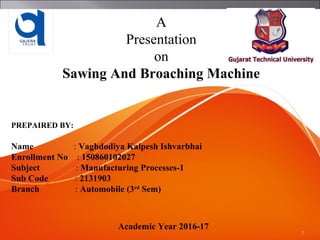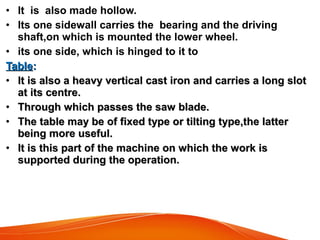This document provides information on sawing and broaching machines. It begins with an introduction and then discusses the classification, components, operation, and applications of sawing machines such as reciprocating saws, band saws, and circular saws. It also covers broaching, including the construction and operation of broaching machines as well as different types of broaches and their applications in machining processes. The document aims to explain the basic concepts and components of sawing and broaching machines.




















































